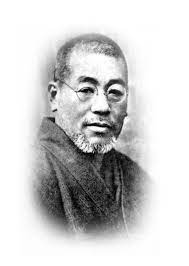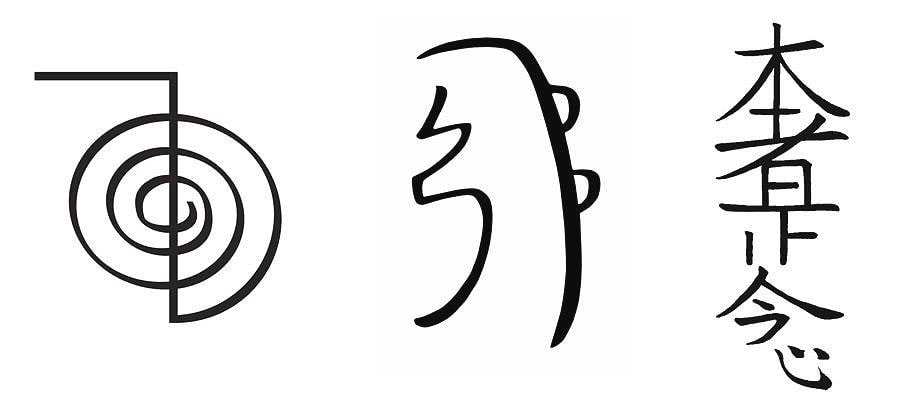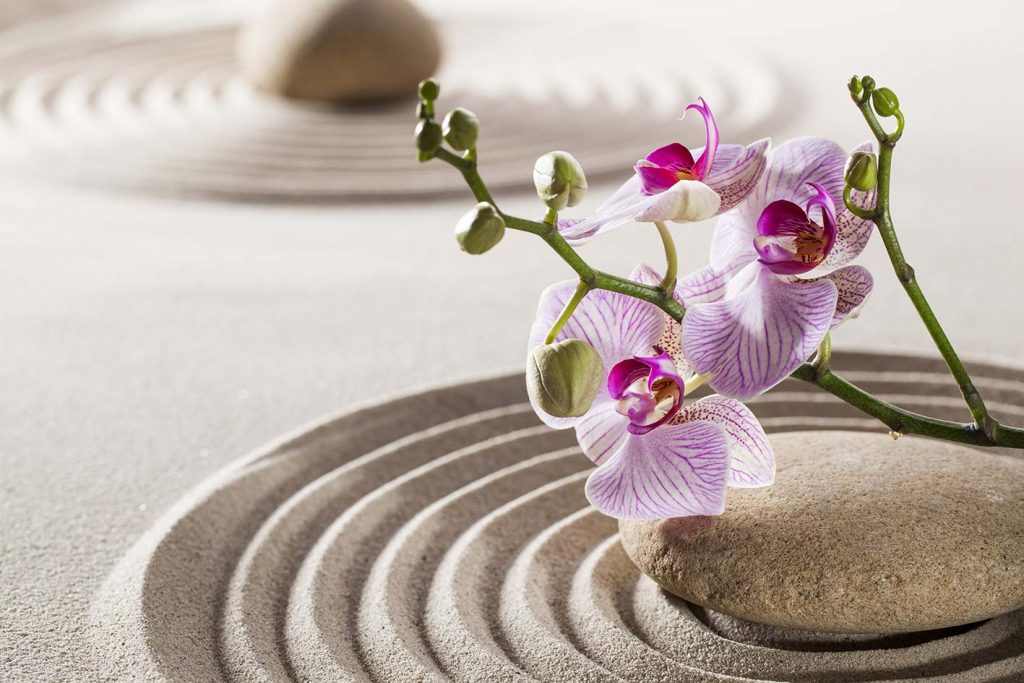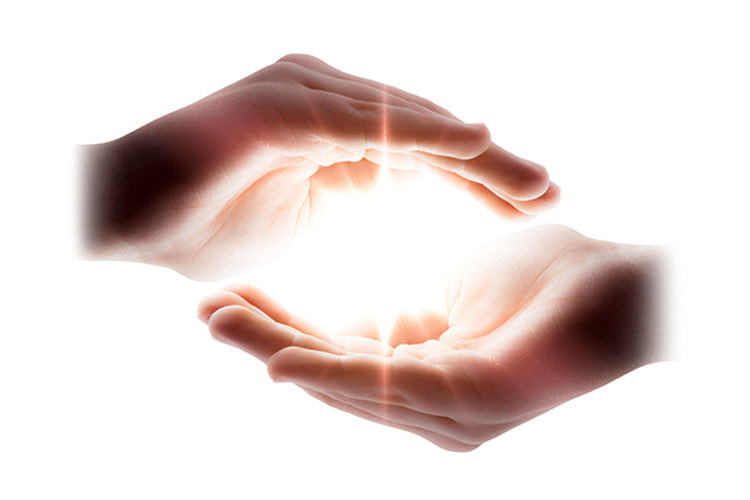What it is and how it works
Reiki, as a word, is made up of two parts—Rei and Ki—and is translated as "universal (rei) energy (ki, or chi)."
As its name may suggest, Reiki is all about energy, and to be precise, it is an energy healing technique that originated in ancient Japan. Reiki is channeled by a trained Reiki practitioner, through the palms of their hands, to the recipient. An in-person Reiki session usually takes place in a quiet, peaceful atmosphere, where the recipient lies down, remaining fully clothed, and the practitioner channels Reiki by holding their hands over the recipient's body, moving down from head to foot in a specific sequence. It is important to note that energy is not bound by time and space, and so Distance Reiki works just as well when sent from afar as when it is delivered in-person. (To my delight, Distance Reiki is steadily gaining in popularity as the general public becomes more and more familiar with the workings of energy and energy healing modalities.)
Reiki arises from the basic principle of "everything is energy" and works with the main energy centers and energy field, or aura, of each individual, removing blockages and bringing us back into balance. When our energy moves freely, we return to our natural state of harmony, health, and well-being, and that is the main goal of Reiki. It is an intelligent life-force energy that flows exactly to where it is needed, and it is completely harmless. Reiki has nothing to do with beliefs, superstitions, or religious dogma of any kind, and it works for the recipient's highest good, whether they feel anything profound during or after the session, or not.
Most people who receive Reiki healing report experiencing tingling sensations, increased warmth or cooling in the body, a sense of lightness, drifting off to sleep, and/or a number of other sensations. After the sessions there are often reports of an increased sense of well-being, inner peace and calm, feeling uplifted, decreased stress and anxiety, and improved sleep. It has also been reported that Reiki speeds up healing of wounds, cuts, and broken bones and can help heal not only physical but emotional trauma. It can also help those fighting addiction and chronic illnesses of different kinds.
Reiki can bring us back into balance on all levels--physical, mental, emotional, and spiritual, however, it is important to note that it is not intended to replace one's primary sources of treatment and is mostly meant to be a complimentary healing modality.
Even a single Reiki session can be of benefit, but as with every practice, regular and consistent treatments lead to the best results.
As its name may suggest, Reiki is all about energy, and to be precise, it is an energy healing technique that originated in ancient Japan. Reiki is channeled by a trained Reiki practitioner, through the palms of their hands, to the recipient. An in-person Reiki session usually takes place in a quiet, peaceful atmosphere, where the recipient lies down, remaining fully clothed, and the practitioner channels Reiki by holding their hands over the recipient's body, moving down from head to foot in a specific sequence. It is important to note that energy is not bound by time and space, and so Distance Reiki works just as well when sent from afar as when it is delivered in-person. (To my delight, Distance Reiki is steadily gaining in popularity as the general public becomes more and more familiar with the workings of energy and energy healing modalities.)
Reiki arises from the basic principle of "everything is energy" and works with the main energy centers and energy field, or aura, of each individual, removing blockages and bringing us back into balance. When our energy moves freely, we return to our natural state of harmony, health, and well-being, and that is the main goal of Reiki. It is an intelligent life-force energy that flows exactly to where it is needed, and it is completely harmless. Reiki has nothing to do with beliefs, superstitions, or religious dogma of any kind, and it works for the recipient's highest good, whether they feel anything profound during or after the session, or not.
Most people who receive Reiki healing report experiencing tingling sensations, increased warmth or cooling in the body, a sense of lightness, drifting off to sleep, and/or a number of other sensations. After the sessions there are often reports of an increased sense of well-being, inner peace and calm, feeling uplifted, decreased stress and anxiety, and improved sleep. It has also been reported that Reiki speeds up healing of wounds, cuts, and broken bones and can help heal not only physical but emotional trauma. It can also help those fighting addiction and chronic illnesses of different kinds.
Reiki can bring us back into balance on all levels--physical, mental, emotional, and spiritual, however, it is important to note that it is not intended to replace one's primary sources of treatment and is mostly meant to be a complimentary healing modality.
Even a single Reiki session can be of benefit, but as with every practice, regular and consistent treatments lead to the best results.
Reiki history

Reiki originated in Japan in the 1920's when a doctor and Buddhist monk—Mikao Usui— received an information download during a particularly austere fast and meditation. He saw a vision of Reiki symbols and how to apply them to channel energy in a particular manner, and so Reiki was born.
He practiced it extensively, administering countless treatments throughout his life. One of his students carried on the tradition and in turn transmitted it to a Japanese-American woman—Hawayo Hiromi Takata, who traveled from Hawaii to Tokyo to receive treatments and who then went on to become a practitioner herself, eventually bringing the practice back to the West.
Today, Reiki is quickly gaining in popularity and is widely practiced in spas, wellness centers, private practices and is even making its way into hospitals.
My Reiki practice
I have been a certified Reiki practitioner for over a decade and over these many years, Reiki has proven to be an indispensable tool in my diverse tool belt of wellness practices, yoga and meditation among them.
I stumbled upon this invaluable practice accidentally, through a friend, and quickly became attuned as a level I practitioner (there are levels one, two, and Master level). Immediately after my attunement, I began to practice on myself and my friends and family, eventually joining a non-profit as a volunteer Reiki practitioner.
Within the next few years I completed a level II training and soon after traveled all the way to Thailand to receive my Master training. This gave me the inspiration to start my own practice, which I named—Heartspace, because Reiki has opened my heart, deepened my empathy, and sparked a strong desire in my heart to be of benefit to others.
I stumbled upon this invaluable practice accidentally, through a friend, and quickly became attuned as a level I practitioner (there are levels one, two, and Master level). Immediately after my attunement, I began to practice on myself and my friends and family, eventually joining a non-profit as a volunteer Reiki practitioner.
Within the next few years I completed a level II training and soon after traveled all the way to Thailand to receive my Master training. This gave me the inspiration to start my own practice, which I named—Heartspace, because Reiki has opened my heart, deepened my empathy, and sparked a strong desire in my heart to be of benefit to others.
Price List
- One in-person Reiki session — 60 min. / $150 *currently unavailable
- One in-person Reiki session — 45 min. / $125 *currently unavailable
- One distance Reiki session — 45 min. / $100
- One distance Reiki session — 30 min. / $75
All distance sessions are held on Zoom unless otherwise specified


